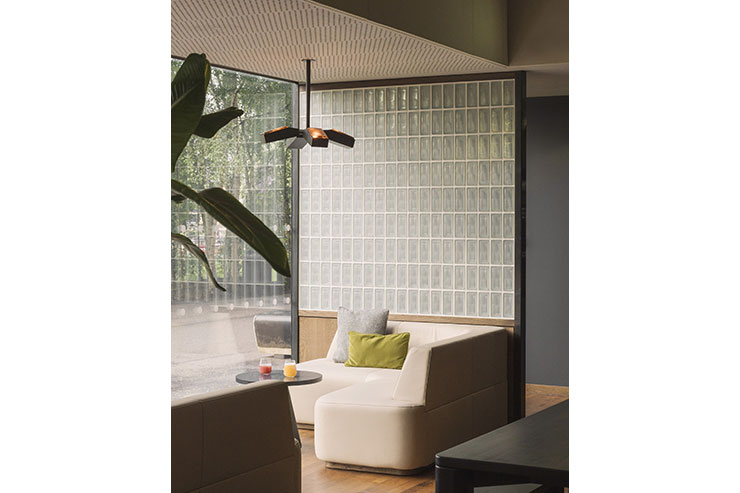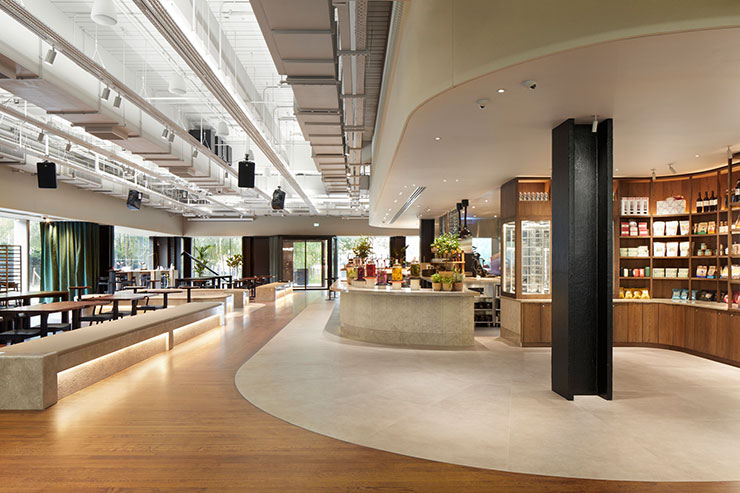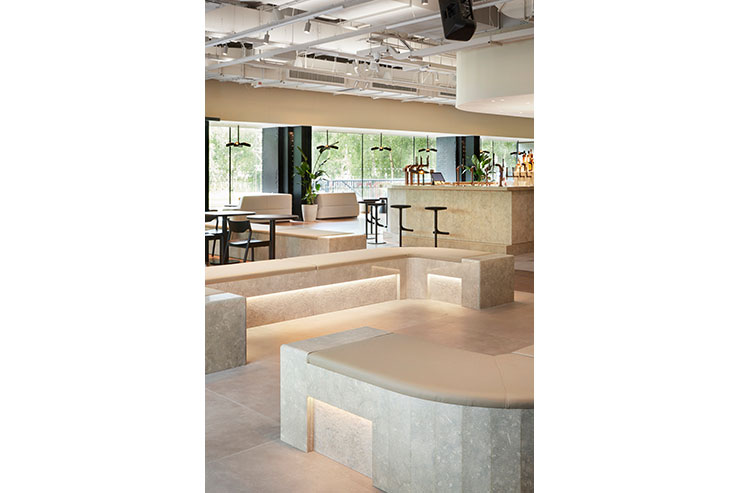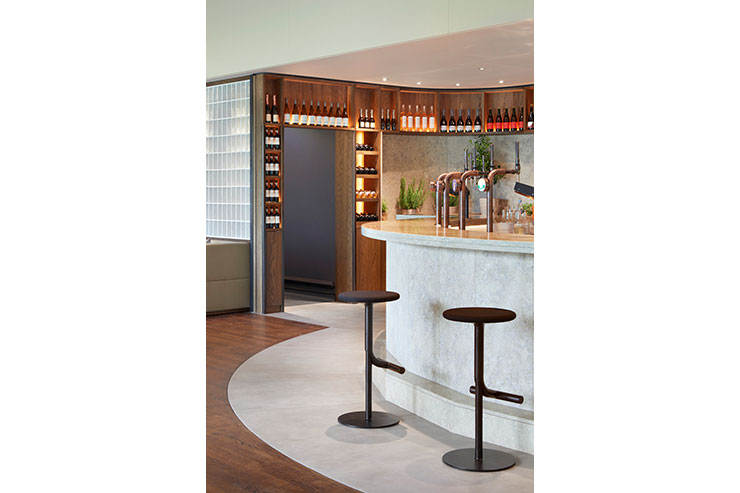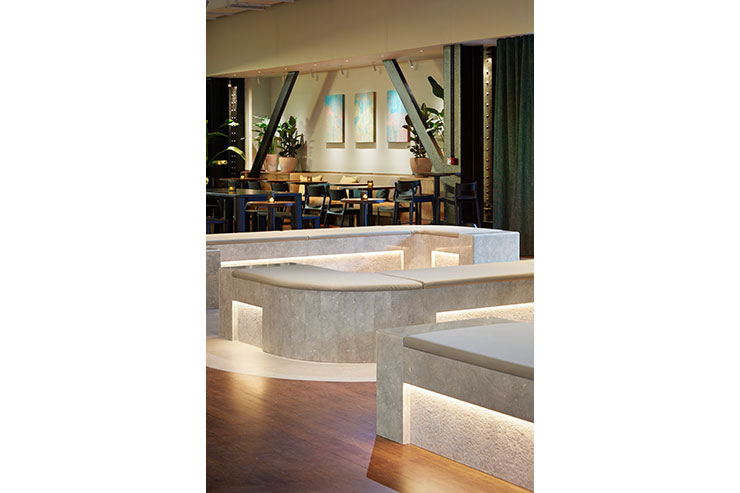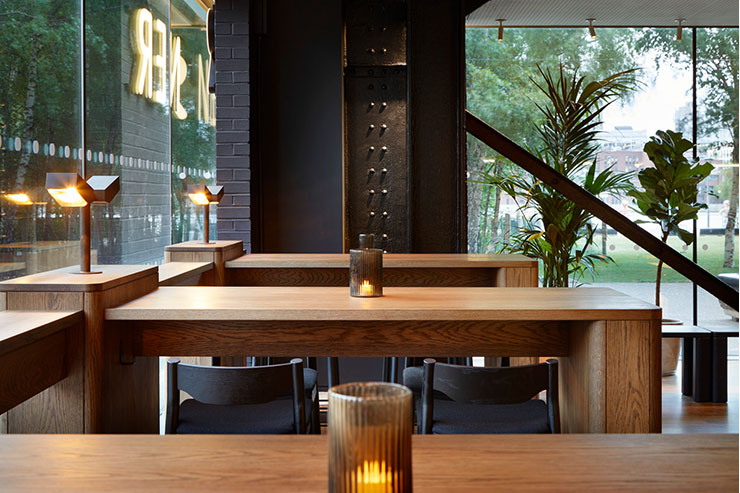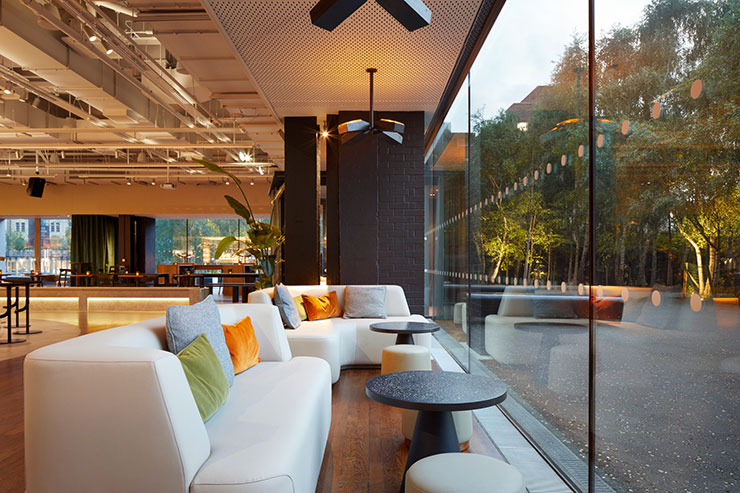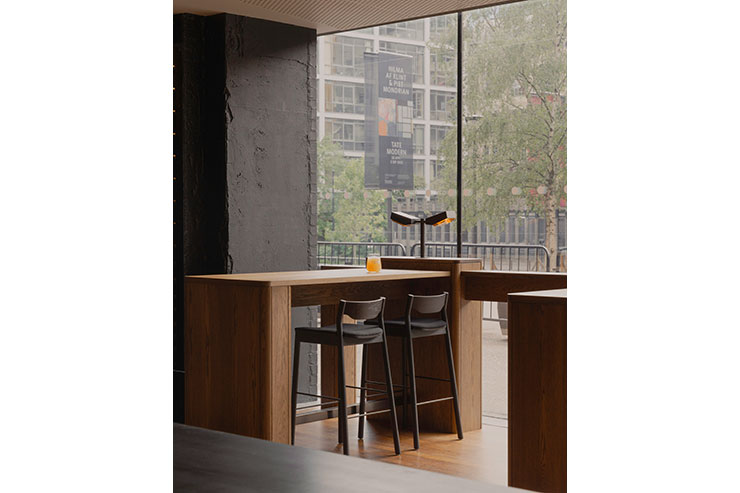- ABOUT
- JUDGING
- CONTACT
- MORE
- 2024 Entries
- Installations 2024
- Past Winners
- Subscribe
- [d]arc directory
- arc magazine
- darc magazine
Corner at Tate Modern, UK
ProjectCorner at Tate ModernLocationLondon, UKLighting DesignThere's Light, UKArchitectHolland Harvey Architects, UKClientTate EatsLighting SuppliersPhos, Factorylux, Rob Light, Georgios P. Limited, CasambiPhotographyJack Hobhouse and Pierce Scourfield
Corner, the new café & bar at Tate Modern was envisioned as an extension of the public realm, providing visitors with a place for an evening drink by the river for the first time. The client brief called for the lighting design to facilitate a daytime café and to transform into a night-time destination bar – essentially two projects in one.
We began conceptually by aligning our thinking with that of the architects who wished to design this space as an extension of the public realm, and thus every element of the project needed to be inclusive, functional, and beautiful; principles which ultimately drove our decision making throughout the process.
We took inspiration from the monumentality of the Tate Modern itself as well as from the urban environment surrounding it – both large in scale and functional for a diverse range of people’s needs. We drew much of our aesthetic inspiration from visually powerful movies such as Blade Runner, with its strong contrasting scenes and overly saturated colour & warmth. This can be seen through our implementation of directional light and low-level integrated light within the plinths to ground an artistic concept and vision on a human scale. In addition, equal attention was given to the quality of light throughout the space, not just the obvious aesthetic appearance of the light fixtures. This focus deliberately maximises the vibrancy of not just the artwork but also the culinary display, connecting food, drink, and art through the implementation of light.
For the daytime we looked to design an inviting scheme, imagined as a subtle transition from bright outdoor conditions to an internal artificially lit environment. During daylight hours we utilised design techniques providing comfortable transition of light levels from the outside, minimising the strain on adjustment of our eyes when adapting to artificial lighting, and in consideration to the energy footprint. This included the application of a neutral matt finish to all the exposed services in the ceiling to help reflect the LED linear up light located on cable trays suspended high up, mitigating the creation of any strong shadowing below. The linear LED located on the cable trays were also specified with a much cooler colour temperature than other fixtures in the space, to help mimic the cool reflected daylight we are accustomed to from the outdoors. This extensive use of cool indirect light during the day with minimal shadowing, amplifies the effect of ambient light and thus increasing the perception of brightness.
As the space transitions into a night-time bar the intensity of the reflected light from the cable trays drops and direct accent light with warmer colour temperatures increases from integrated sources in joinery and from focused directional light onto artwork, plants, and furniture. The shift in focus from a brightly lit open space to a more dispersed yet controlled direction of light, directly contributes to the intimate setting in the evening. This is achieved by directing light to specific areas only and favouring warmer colour temperatures to alter the appearance of materials and reinforce the feeling of a cozy intimate environment.
We took every opportunity to highlight the existing structural details, stitching these elements together with the newly introduced moments from the architects to form a cohesive and immersive experience through the minute layering of lighting layers. An example of this is evident from the placing of micro adjustable spotlights between the exposed columns, highlighting the steel rivets which are still visible from a time when the structure served as a prominent power station. This is balanced with the careful detailing of integrated lighting to showcase the vast array of products on offer. Our commitment to creating a bespoke, unique space that connects food, art and riverside entertainment has been fulfilled through consistently considered design and tailored decorative lighting unique to the space.
Bespoke table lights on the bar and for the perimeter window seating takes inspiration from utilitarian 1970s streetlights, from the fixtures form to the warm glow they provide, reminiscent of high-pressure sodium lighting technology they were originally designed with. The same design, but in a larger format, is seen used inverted as the feature pendants hanging from ceilings. We worked closely with a family run artisan workshop to deliver the finesse and consideration to detail these fixtures warranted, whilst ensuring their appearance was something truly distinctive.
An entirely Bluetooth enabled scheme was considered, as control was paramount to the success of implementing the lighting concept, allowing us to create scenes for daytime and night which set apart the different services at Corner, fulfilling an essential part of the brief. The wide range of control units meant that solutions were tailored to each specification, based on how zoning was envisioned without impacting on the electrical cabling install, streamlining the installation process, reducing cabling and ultimately resources, from materials to time regarding commissioning.
We specified ethically minded British manufacturers that employ the principles of a circular economy in their manufacturing process. This is exemplified through fixtures such as the high-level track spotlights, which are made from raw aluminium, left purposely unfinished, celebrating the product’s natural material. This design choice also removed the addition of toxic powder-coated paints from the product. In addition, the fixtures themselves consist of simple and replaceable parts making them easy to reuse, recycle, upgrade, and disassemble using hand tools at the end of the product’s lifespan.
